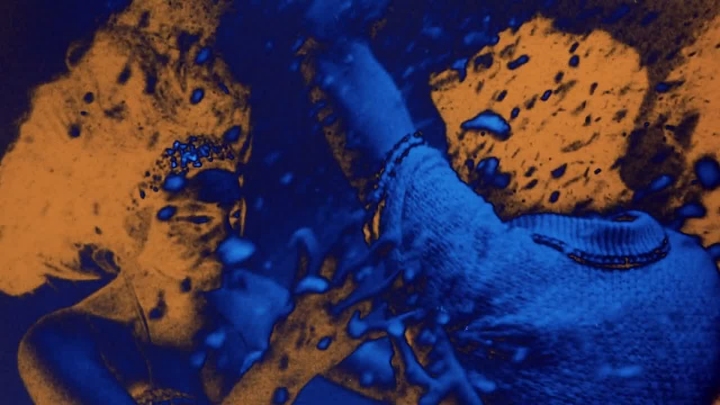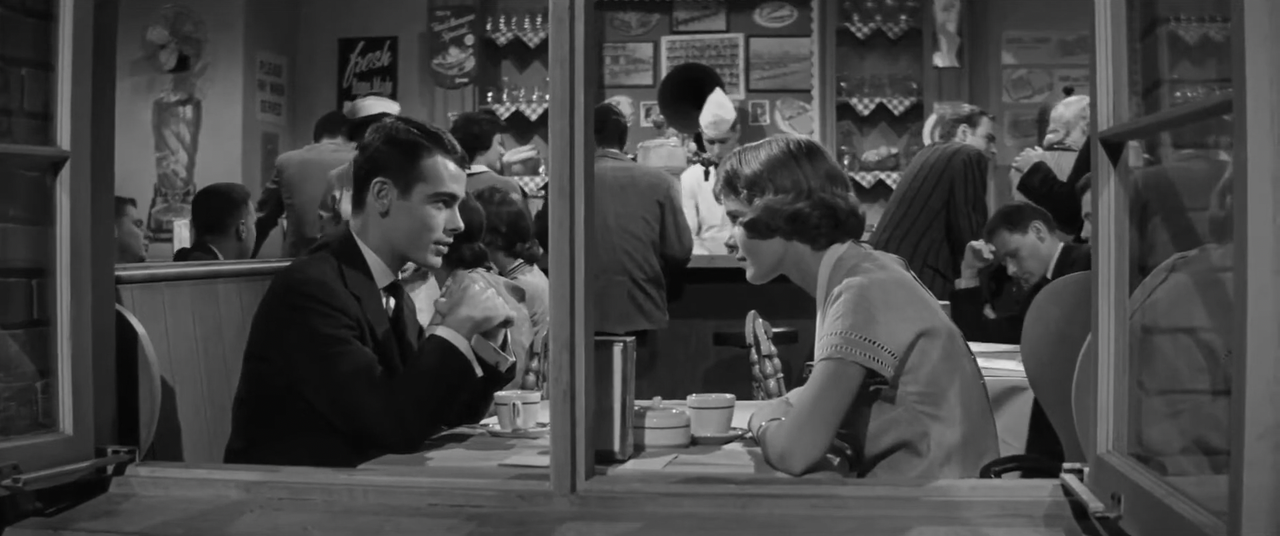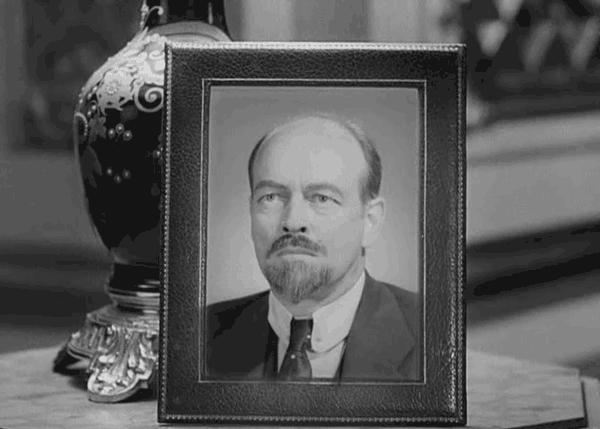“Stop to eat every 8 hours. Just sandwiches.”Plunder Road [The Violent Road] (Hubert Cornfield, 1957)
Jul
10
sandwiches

At a diner, a dark-haired waitress holds up a carafe with fresh coffee and a take-away cup. A man in the background appears to keep an eye on her. DP: Ernest Haller.
usa
“Clicks, clacks, riding the backs of giraffes for laughs,
S'alright for a while,
The ego sings of castles and kings,
And things that go with a life of style,
Wanting to feel, to know what is real,
Living is a, is a lie”Head (Bob Rafelson, 1968)
Jul
10
Bahamas Independence Day

After Micky (Micky Dolenz, R) jumps of a bridge, the picture becomes pseudo-solarized and to the sweet tunes of Gerry Goffin and Carole King's Porpoise Song, he meets a siren (actress unknown, L). DP: Michel Hugo.
– The Monkees, Porpoise Song (1968)
“It isn't Jesus. It's just a fella.”Whistle Down the Wind (Bryan Forbes, 1961)
Jul
9
white bread

A child grabs a thick slice of white bread while the cutlery on her plate indicates she's finished eating. DP: Arthur Ibbetson.
– Charlie Bostock
“Good night, Gentle Jesus. Sleep well.”Whistle Down the Wind (Bryan Forbes, 1961)
Jul
9
Barn Day

The man (Alan Bates) in the barn surrounded by little children. The older girl in the light coat, Kathy, is played by Hayley Mills, author Mary Hayley Bell's daughter. DP: Arthur Ibbetson.
In the barn of a remote Lancashire farmhouse, three children stumble upon a stranger. Confused, they conclude that the fellow must be the Second Coming of Christ. In the world of the adults, a man is wanted by the police.
– Charlie Bostock
Ninotchka (1939)
Ninotchka and Leon (Garbo and Douglas) cracking up. DP: William H. Daniels.

July 1: a joke for #InternationalJokeDay
Ninotchka (Ernst Lubitsch, 1939)
Garbo laughs!
The great Garbo was known for her beauty, her coolness, her tragedy, for a lot but her laughter. So typecast she became that the tagline for Ninotchka (1939) – Garbo laughs! – is a #joke in itself.
Penned by the great Billy Wilder, the Ernst Lubitsch directed comedy unexpectedly temporarily revived #Garbo's career, who by the time 1938 came around had become box office poison. And the joke? Well…
A man comes into a restaurant. He sits down at the table and he says, “Waiter, bring me a cup of coffee without cream.” Five minutes later, the waiter comes back and says, “I'm sorry, sir, we have no cream. Can it be without milk?”
#Bales2023FilmChallenge #ErnstLubitsch #BillyWilder #GretaGarbo #MelvynDouglas #WernerRHeymann #WilliamHDaniels #comedy #communism #romance #USA #1930s
“Say, mister. Will you stake a fellow American to a meal?”The Treasure of the Sierra Madre (John Huston, 1948)
Jun
30
campfire grub

Curtin (Tim Holt), Dobbs (Bogart), and Howard (Walter Huston) eating campfire grub. DP: Ted D. McCord.
– Dobbs
“I know what gold does to men's souls.”The Treasure of the Sierra Madre (John Huston, 1948)
Jun
29
National Handshake Day

Fred (Humphrey Bogart) and Curtin (Tim Holt) shake hands witnessed by gruff prospector Howard (Walter Huston). DP: Ted D. McCord.
Cheated out of their wages, broke Americans #Bogart and Holt are approached by a former prospector. There's #gold in the #SierraMadre mountains, he tells them.
– Howard
Seemingly character driven, Huston's The Treasure of the Sierra Madre is an adventure moved by a relentless #landscape, the urge to drift, and #greed.
“Europe, a Stutz Bearcat, the best restaurants. You fellas really have a hard life, don't you?”Compulsion (Richard Fleischer, 1959)
Jun
29
coffee

A squeaky young Stockwell and Varsi at a diner. We're looking in from the outside through an open window. The place is busy but she's all enthralled by his wit and intellect (and looks for sure). DP: William C. Mellor.
– Harold Horn, DA
“I don't care about your barley. Or, your vines! Or, your new terra!”Stromboli (Terra di Dio) [Stromboli] (Roberto Rossellini, 1950)
Jun
27
tuna (fresh)

Karen (Ingrid Bergman) looking miserable at a small kitchen table. A huge tuna covers most of its surface. DP: Otello Martelli.
Posted while deciding on my film dinner. Eventually I went with Tourneur's La Main du Diable (1943).
– Karen
“Here we are, poor wretches, in this hell, Condemned to tyranny.” Stromboli (Terra di Dio) [Stromboli] (Roberto Rossellini, 1950)
Jun
27
Decide To Be Married Day

Antonio (Mario Vitale) and Karen (Ingrid Bergman). DP: Otello Martelli.
Karen – “Karin” in the opening credits – is a displaced Lithuanian woman in an Italy-based refugee camp. She meets an Italian military man bivouacking on the other side of the barbed wire and decides to say yes when he proposes. When the newly-weds leave for home, she finds to her dismay that he's a poor Sicilian fisherman from #Stromboli; a magnificent active volcanic island home to a small Catholic parish. Again displaced, Karen is confronted with herself more than with the others that share her faith.
– Antonio
Roberto #Rossellini's Stromboli (Terra di Dio) is a peculiar melodramatic Italian/American hybrid that seems to strongly dismiss the Italian aspect. The significance of Struògnuli – the Sicilian name for the volcano – and the people's faith connected to the volatile mountain and the surrounding sea is presented as primitive superstition. That the Sicilian dialogue – song, prayer, life – remains untranslated and the locals' broken English is used as comic relief adds insult to injury.
Otello Martelli's photography excels when he manages to tear himself away from Bergman's face. Only when we're confronted with the magnificence of Struògnuli, the gifts from the ocean, and the greatness of nature we'll be able to understand why the island is man's home.
